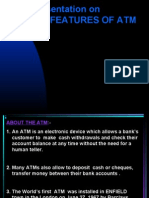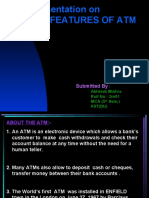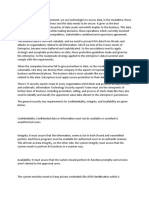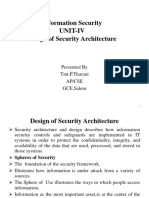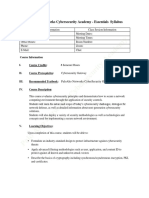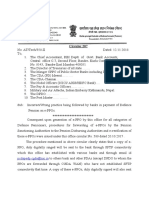0% found this document useful (0 votes)
54 views3 pagesProposed OSI Security Architecture For An ATM System
The proposed OSI security architecture for an ATM system outlines security measures across all OSI layers to ensure Confidentiality, Integrity, and Availability (CIA). Each layer addresses specific threats, such as card skimming and session hijacking, with corresponding security measures like encryption, firewalls, and multi-factor authentication. The architecture emphasizes the importance of maintaining secure communication and operational reliability for ATM systems.
Uploaded by
samrethidivimaCopyright
© © All Rights Reserved
We take content rights seriously. If you suspect this is your content, claim it here.
Available Formats
Download as DOCX, PDF, TXT or read online on Scribd
0% found this document useful (0 votes)
54 views3 pagesProposed OSI Security Architecture For An ATM System
The proposed OSI security architecture for an ATM system outlines security measures across all OSI layers to ensure Confidentiality, Integrity, and Availability (CIA). Each layer addresses specific threats, such as card skimming and session hijacking, with corresponding security measures like encryption, firewalls, and multi-factor authentication. The architecture emphasizes the importance of maintaining secure communication and operational reliability for ATM systems.
Uploaded by
samrethidivimaCopyright
© © All Rights Reserved
We take content rights seriously. If you suspect this is your content, claim it here.
Available Formats
Download as DOCX, PDF, TXT or read online on Scribd
/ 3





